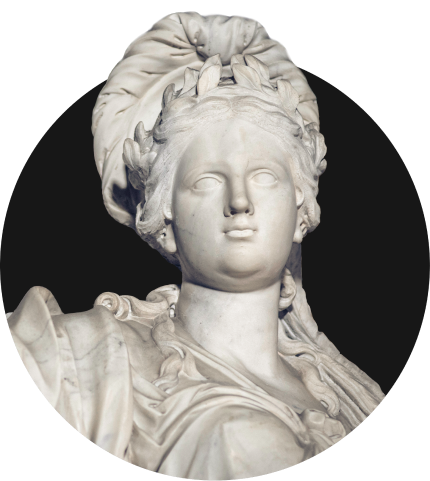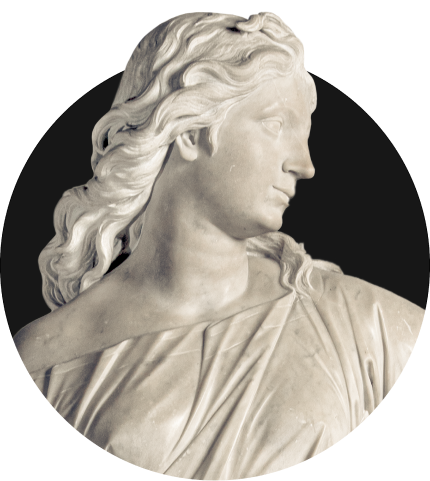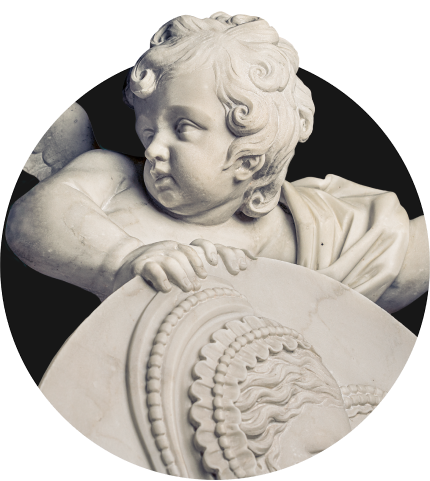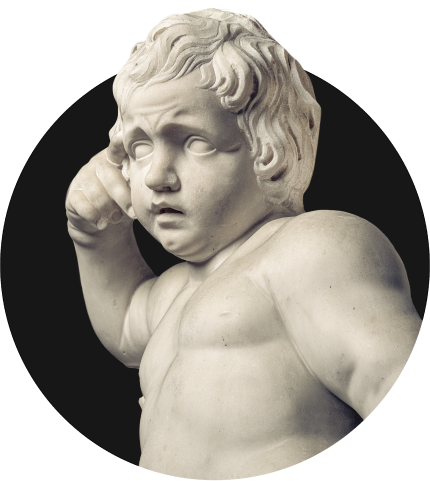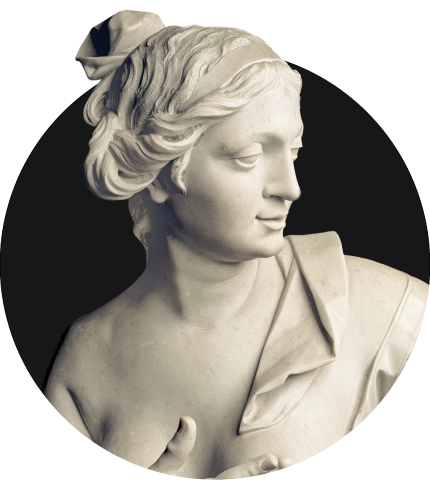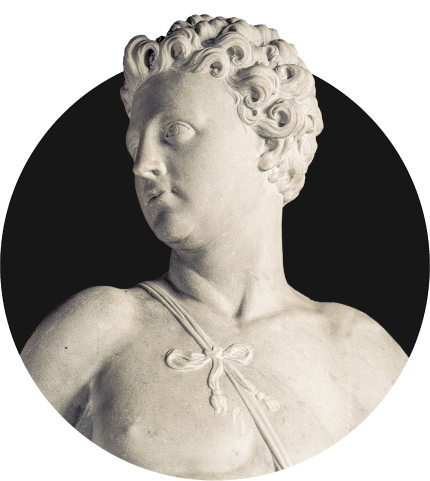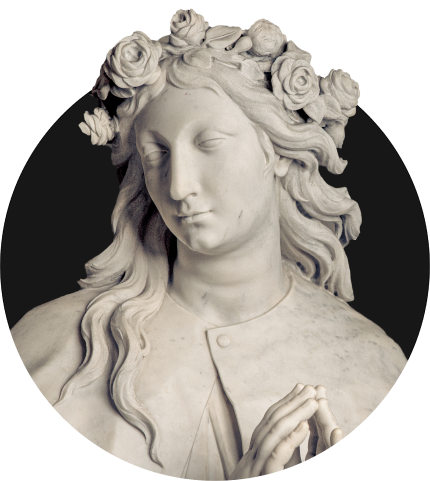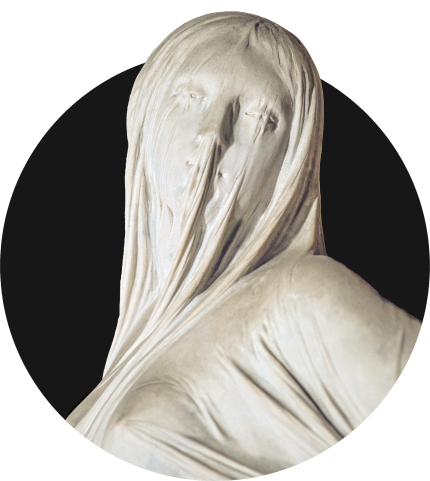
The statues
Divine Love
The statues
Divine Love
Divine Love has historically been attributed to numerous sculptors, but the identity of its actual creator remained uncertain for many years. It was dedicated to Giovanna di Sangro, Marchioness of San Lucido and wife of Giovan Francesco di Sangro, the fifth Prince of Sansevero.
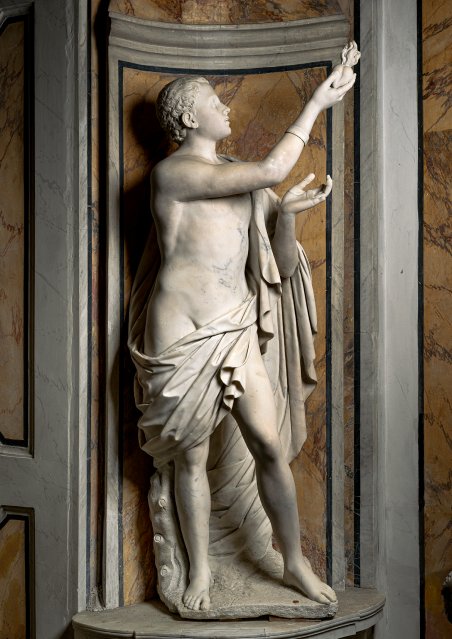
The group of statues
Stylistic similarities with other works by Queirolo had led to the attribution of this Virtue to him. However, recent research suggests that the statue was originally part of a funerary monument dedicated to Paolo di Sangro, second Prince of Sansevero, and was executed by Michelangelo Naccherino in the early 1600s. In the next century, during the extensive renovations of the entire Chapel commissioned by Raimondo di Sangro, the sculpture was separated from the funerary monument of the second Prince of Sansevero and was partially reworked, probably by Francesco Queirolo.
A youth wrapped in a cloak looking towards the heavens and holding a flaming heart in his right hand extols the noblewoman’s love of God, commemorated in the inscription on the pedestal. The sculpture is conceptually, and in terms of certain stylistic features, linked to Decorum, while the flaming heart insistently recalls other marble groups with the same symbol.
The statue received particular praise from the nineteenth-century art historian Leopoldo Cicognara, who even deemed it the finest in di Sangro’s mausoleum, presumably because “with its simplicity – observes Rosanna Cioffi – it must have seemed to him the most ‘neo-classical’ in the Chapel”. Despite the lack of profound inspiration, the artist endows the subject with a certain descriptive vitality.
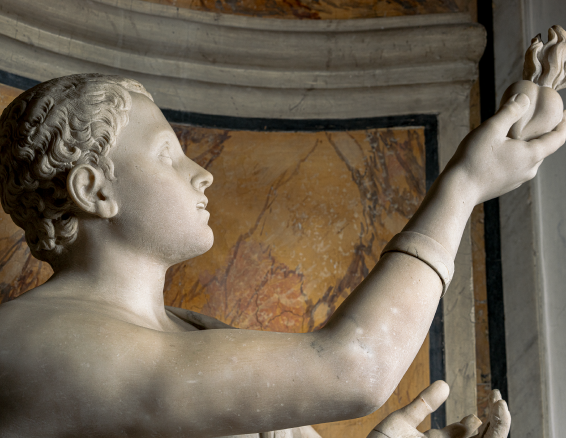
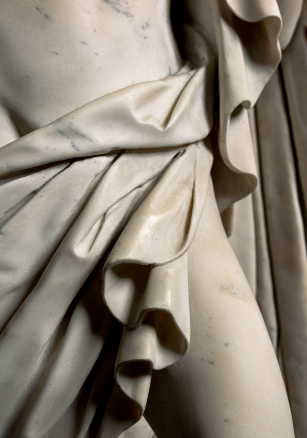
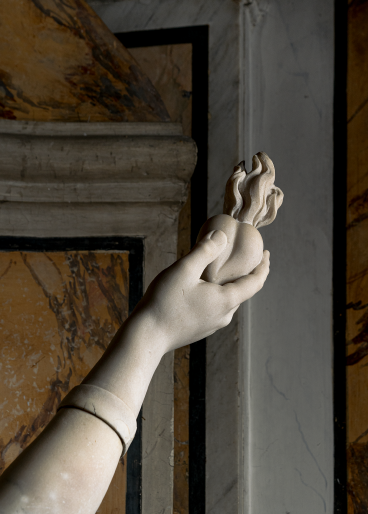
The meaning of the work
To the right of the “main door” of the Chapel (as you come in), the memorial statue appears to be an orthodox exaltation of love for God, which makes the heart burn with mystic passion. The various symbolic references to alchemistic and initiatic processes to be found in the Chapel, however, lead one to think that there is a reference to the fire that the alchemist receives from God.
Gallery
Map
- High altar
- The monument to Alessandro di Sangro
- Modesty
- Saint Rosalia
- The sweetness of marital yoke
- Portrait of Vincenzo di Sangro
- Religious zeal
- Monument to Giovan Francesco
di Sangro, first Prince of Sansevero - Liberality
- Monument to Paolo di Sangro,
fourth prince - Decorum
- Monument to Giovan Francesco
di Sangro, third prince - Monument to Cecco di Sangro
- Monument to Giovan Francesco
di Sangro, fifth prince - The veiled Christ
- Glory of Heaven
- Disillusion
- Saint Oderisio
- Sincerity
- The tomb of Raimondo di Sangro
- The labyrinth floor
- Self-control
- Monument to Paolo di Sangro,
sixth prince - Education
- The anatomical machines
- Madonna and child
- Portrait of Raimondo di Sangro
- Monument to Paolo di Sangro,
second prince - Divine Love









